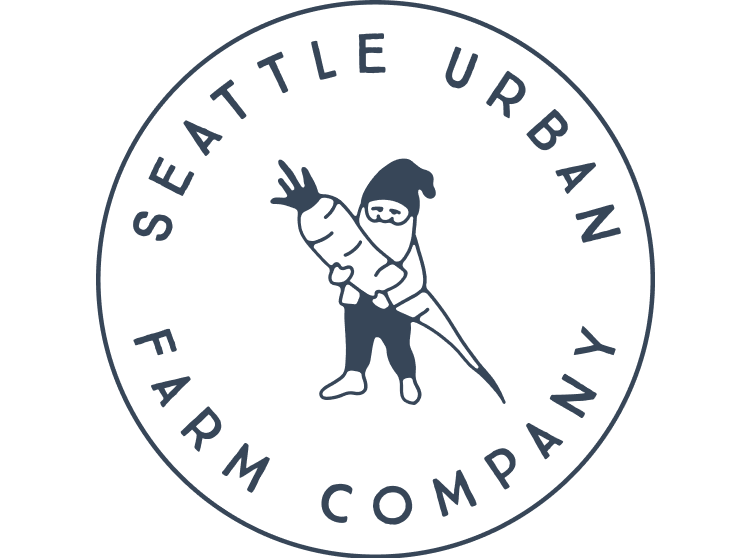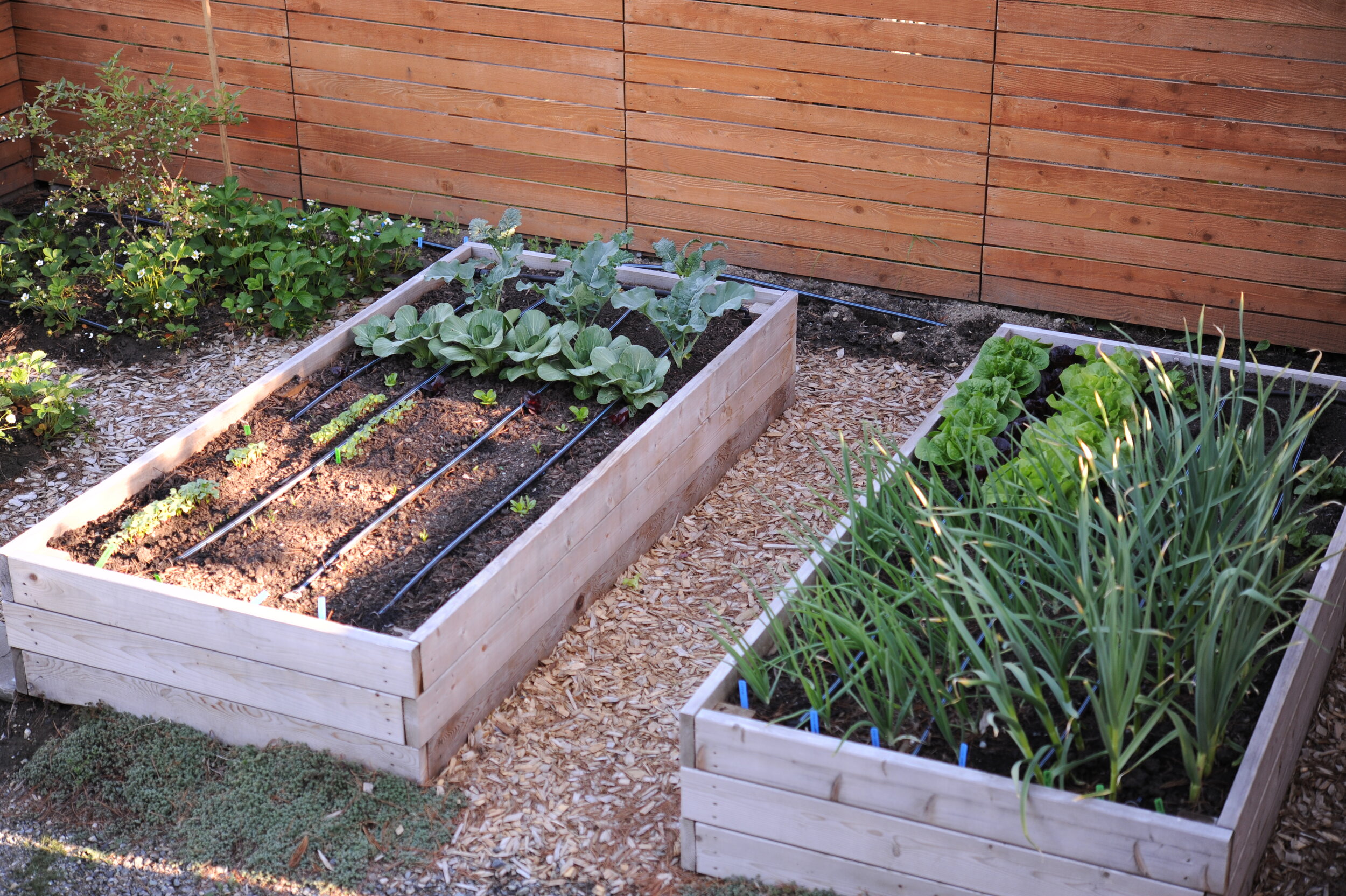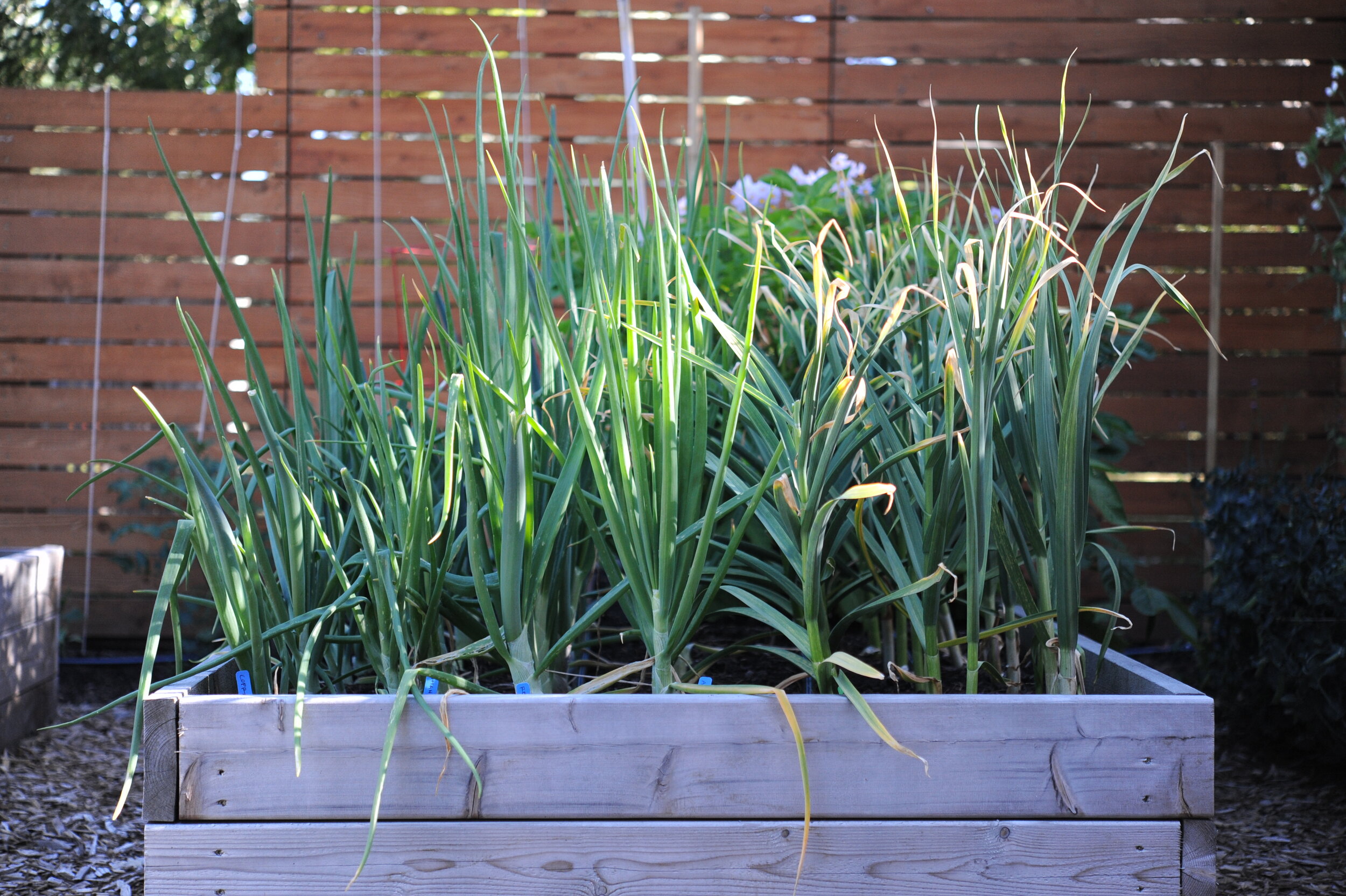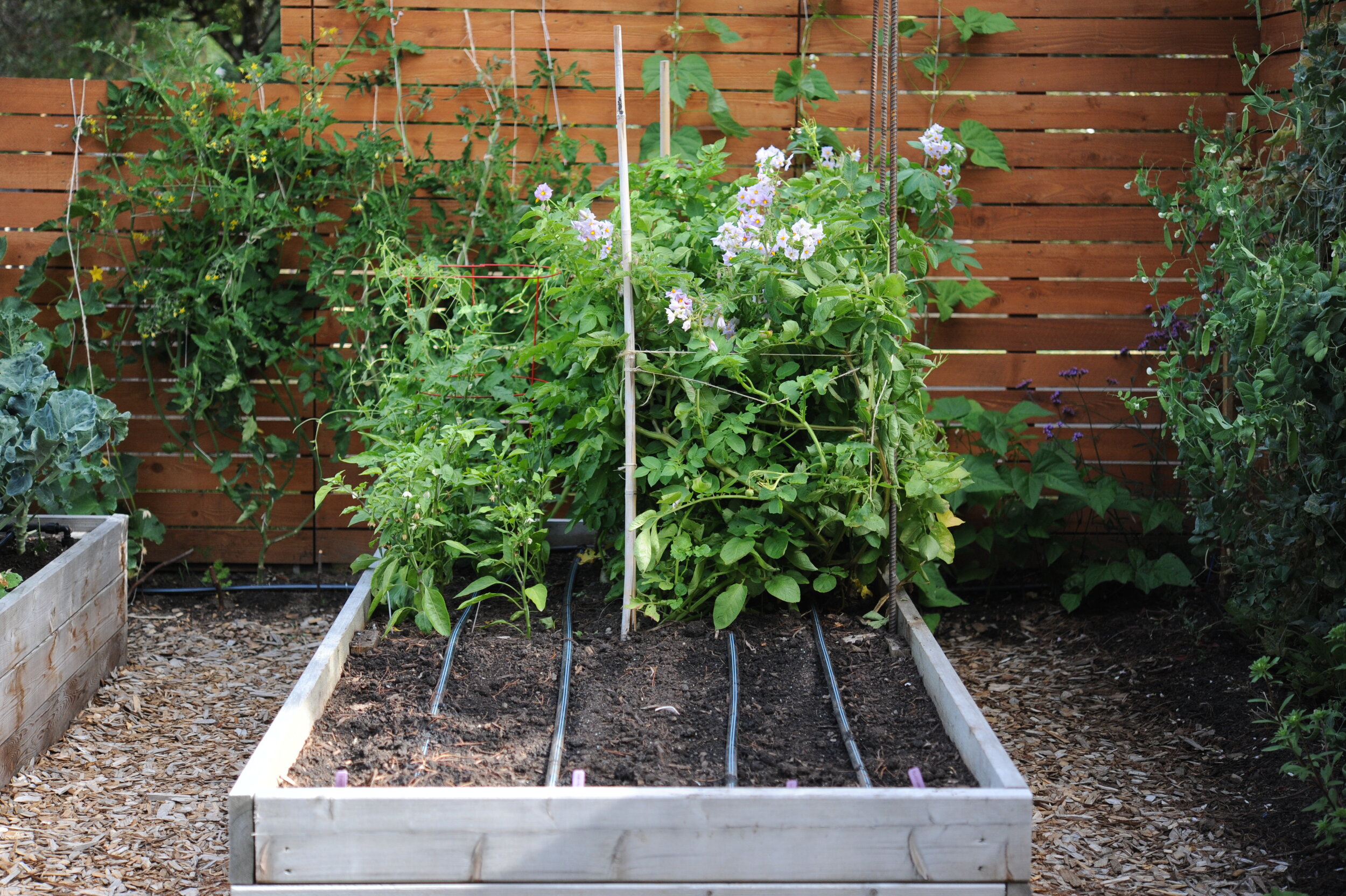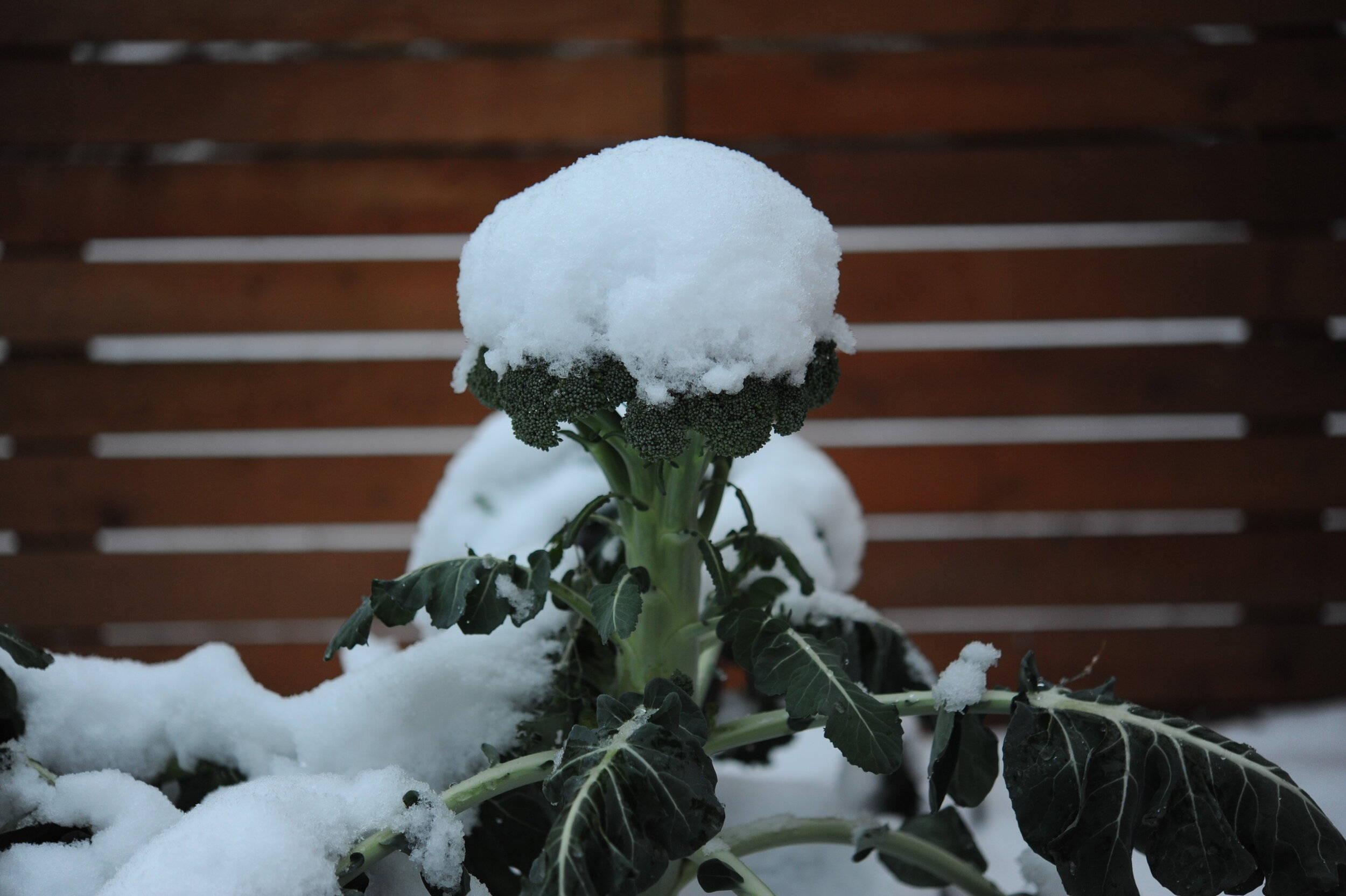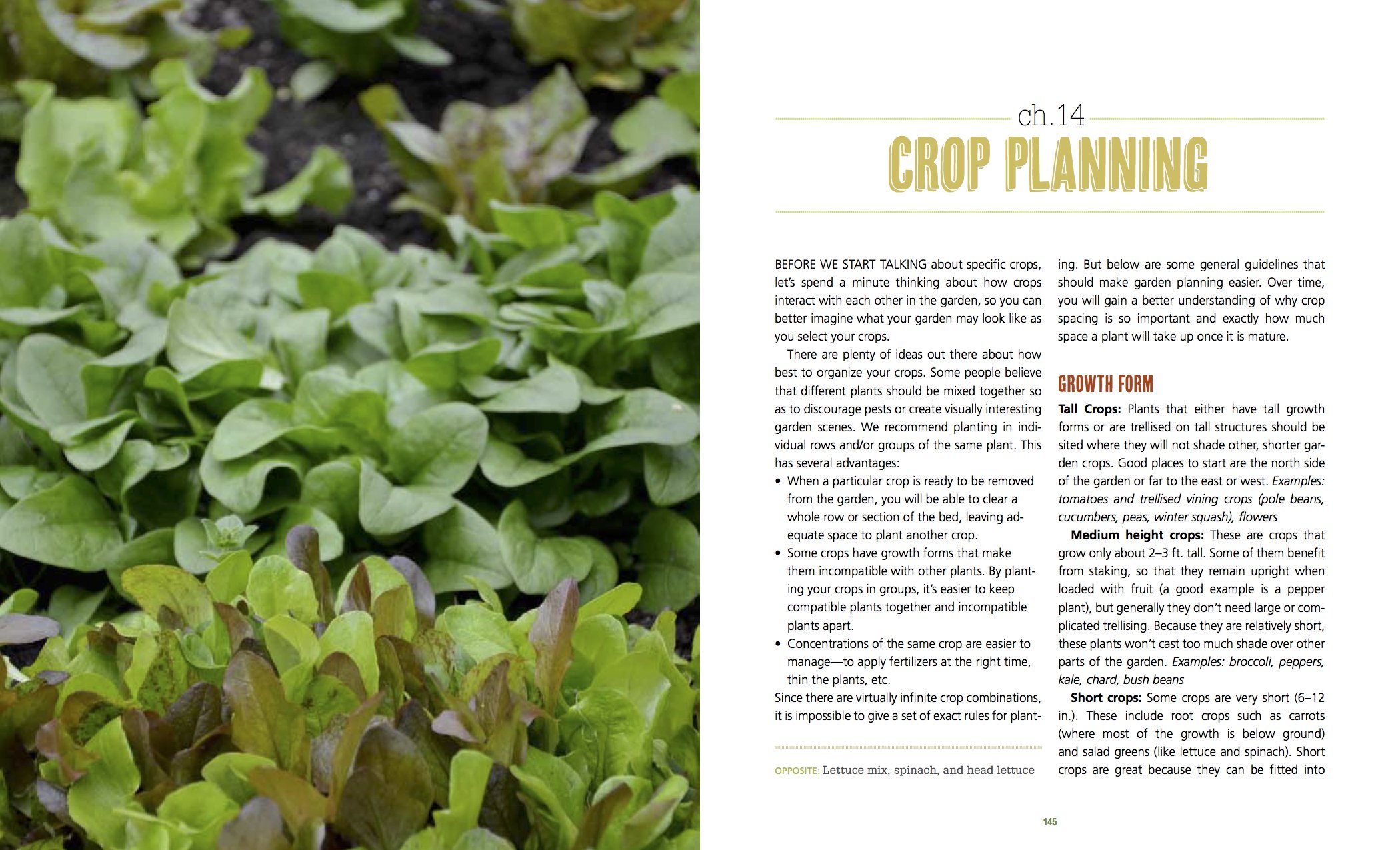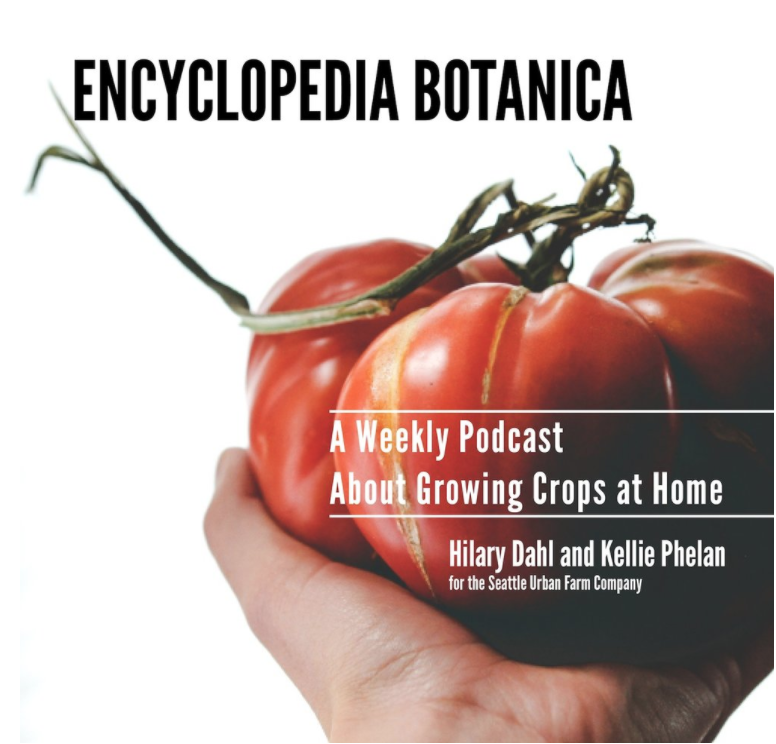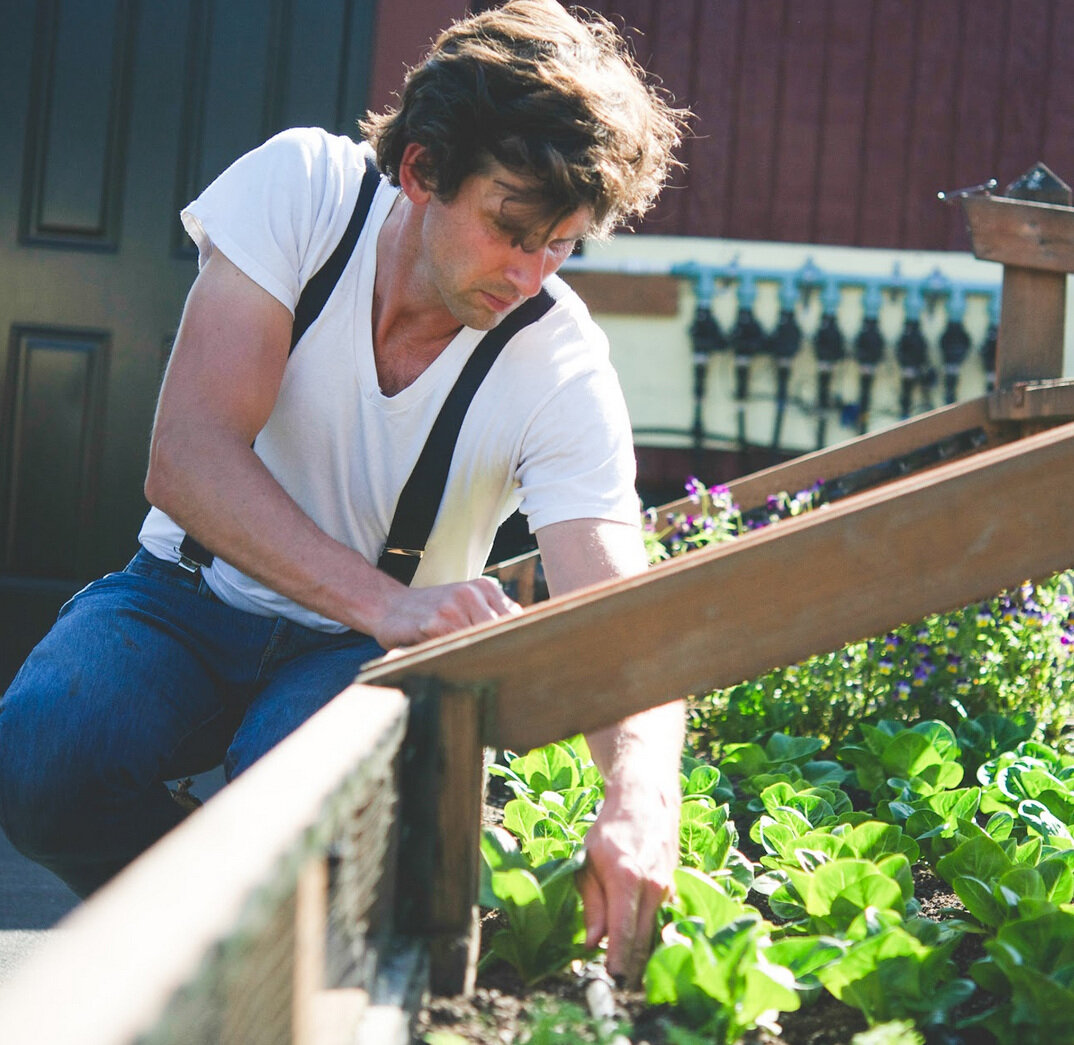Crop planning for the vegetable garden often feels overwhelming to new (and experienced) growers. There are many different schools of thought on how to plan and layout annual crops. As a result, there’s lots of conflicting information out there to confuse the well-intentioned researcher.
At Seattle Urban Farm Co., we create plans for 70 gardens each year. Our garden plans are devised to maximize the garden’s productivity, while keeping them neat and tidy. We organize our plantings to make ongoing maintenance as easy as possible.
For gardens to be productive and tidy, we make sure they have plenty of light, water, and nutrients; we work to keep pest pressure low; and we succession plant new crops all season long.
A key to our crop planning system is that we plant in individual rows and/or groups of the same crop. This has several advantages, including the following:
When a particular crop is ready to be removed from the garden, you will be able to clear a whole row or section of the bed, leaving adequate space to plant another crop. (See: Crop Rotation and Lifespan)
Some crops have growth forms that make them incompatible with other plants. By planting your crops in groups, it’s easier to keep compatible plants together and incompatible plants apart. (See: Growth Form)
Concentrations of the same crop family are easier to manage—to apply fertilizers at the right time, thin the plants, etc.
Even within the bounds of these rules, there are infinite crop combinations. To illustrate these concepts, I’m going to walk you through the crop cycle over one year in my home garden.
I chose the following crop plan because this garden is similar in size to many home gardens. It consists of two 4’ x 8’ beds and a surrounding 2’-wide L-shaped bed. In most years I am lucky enough to have more growing space than this (and I’ll take every square foot I can get!). However, I am hoping this particular year feels accessible to most gardeners- and it shows just how much food you can grow in a relatively small amount of space.
A quick note on reading the maps below: (T) means the crop was planted in the garden as a transplant and (D) means that the crop was direct sown. The crops in bold are the ones that were planted during the time period discussed in each map.
MARCH-APRIL
The first image shows the garden in mid-March and April. Everything in the diagram, except the garlic, was planted during these early spring months. I just happened to be really into beets at this time, so I dedicated a lot of space to them. In other years, I would have probably divided the space dedicated to beets in half and added a planting of carrots.
MAY-JUNE
In early May I plant my summer crops and many cut flower transplants. Later in the month, the first successions of the season are planted. Throughout the spring, I harvest my first planting of head lettuce. I harvest the last of these heads and replace them with peppers and a cucumber cage of sour gherkins. Bok choy thrives in the cool spring months, but starts to bolt when the weather warms, so I also harvest the last of these heads and replace them with a round of warm-season head lettuce.
In this plan I have a row of shelling peas in front of a row of snap peas in a bed that’s less that 2 feet wide. This spacing works because the shelling peas are much shorter than the snap peas in both plant height and crop lifespan. I harvest and pull the shelling pea plants out of the garden in late June, about a month before the snap peas are finished. This allows the mature snap peas better air flow towards the end of their lifecycle, when they start to become susceptible to diseases such as powdery mildew.
JULY-AUGUST
By mid-July, many of my remaining spring crops are ready to be pulled out of the garden. In the early weeks of July, I harvest the last of my peas and clear the plants to make room for fall broccoli, kale and cabbage. Onions and garlic have matured and are ready to cure out of the garden in the summer sun by mid-July. Once those come out, they are replaced with a planting of bush beans and beets. Mid-July in the PNW is the time to plant your final succession of beets, carrots and bush beans. If you push it much later, these crops won't have time to mature.
Below: July 5th, Juy 19th and August 3rd
SEPTEMBER-OCTOBER
September is the tail end of the planting season in the PNW, and not all crops have time to mature this late in the season. The good news is that most gardens are full and bursting with produce this time of year, so there isn’t always room for new crops anyway.
If you want to plant a swath of spinach to overwinter in your garden, early September is the time. Same with cilantro, which germinates quickly in the warm days of early summer, but resists bolting much longer in the cool days of fall. This is also the time to plant other shorter season cool-tolerant crops like turnips, arugula and radishes.
In this garden, I cleared more than ½ of a 4x8 foot bed to make room for these fall crops. Carrots can overwinter in the garden, and beets can hold in the garden into the fall, but these crops also hold well for months in my refrigerator, so I’d rather dedicate this space to growing something new and increase my overall garden productivity.
Also, I just want to make a quick note that I find that garden stakes are an essential tool for any high-yield gardener. You can see them featured pretty prominently in the images above. 3 foot wooden stakes are really useful when trying to wrangle bush beans and keep them from flopping over onto their neighboring crop. 6 foot stakes can be used in the same way for shelling peas, or any other short variety, and potatoes!
Below: September 1st in onion/potato bed and September 3rd in original beet/brassica bed
NOVEMBER-FEBRUARY
I planted garlic and fava beans in November, but besides those two crops, everything that’s in the garden at this point has been in place and growing to maturity for the past few months.
My spring planted kale and broccoli was still looking healthy and robust, so I left them in overwinter. In late February both plants start producing again; the kale with new leaves and the broccoli with substantial side shoots or mini-florets.
My fall planted brassicas also held well. On warmer days I harvested heads of cabbage and broccoli and leaves of kale. Like cilantro, brassicas are less likely to bolt during the winter months, so there’s less of a rush to harvest crops like broccoli, which can flower quickly in the summer after the plant has put on a head.
I harvested much of the spinach in the fall, but left about an inch of each plant to photosynthesize. These overwintered plants started putting on new growth in mid-February, and provided a large harvest in early March.
The remainder of the garden is cleared and topped with compost in November so that it’s ready to plant again the following March!
Below: Pulling the last of my late summer planted beets on November 27th and snow on overwintering broccoli on December 9th
